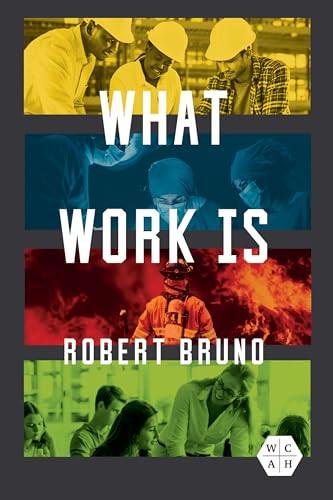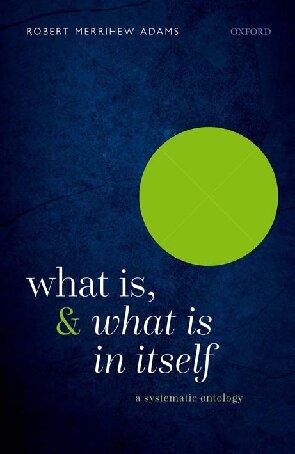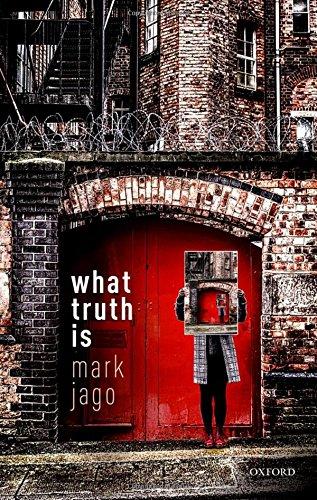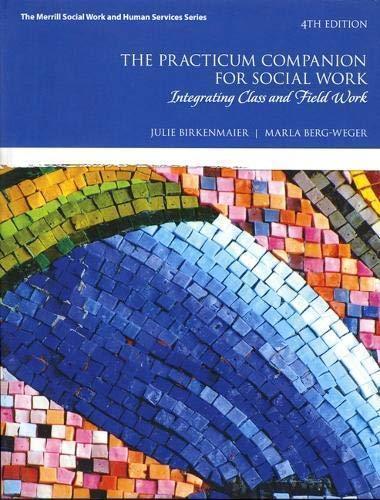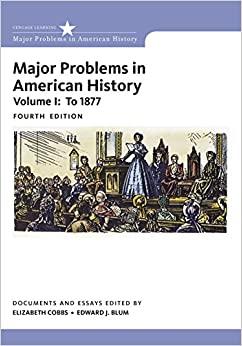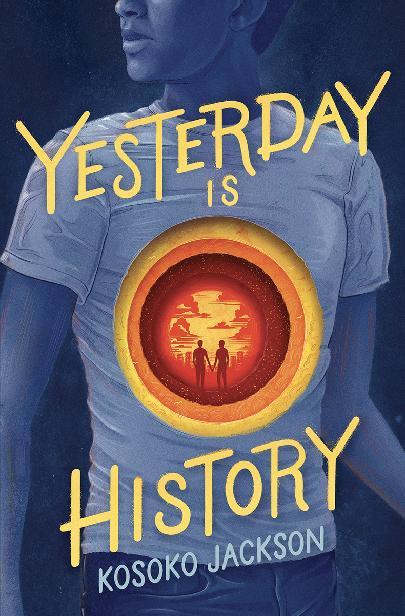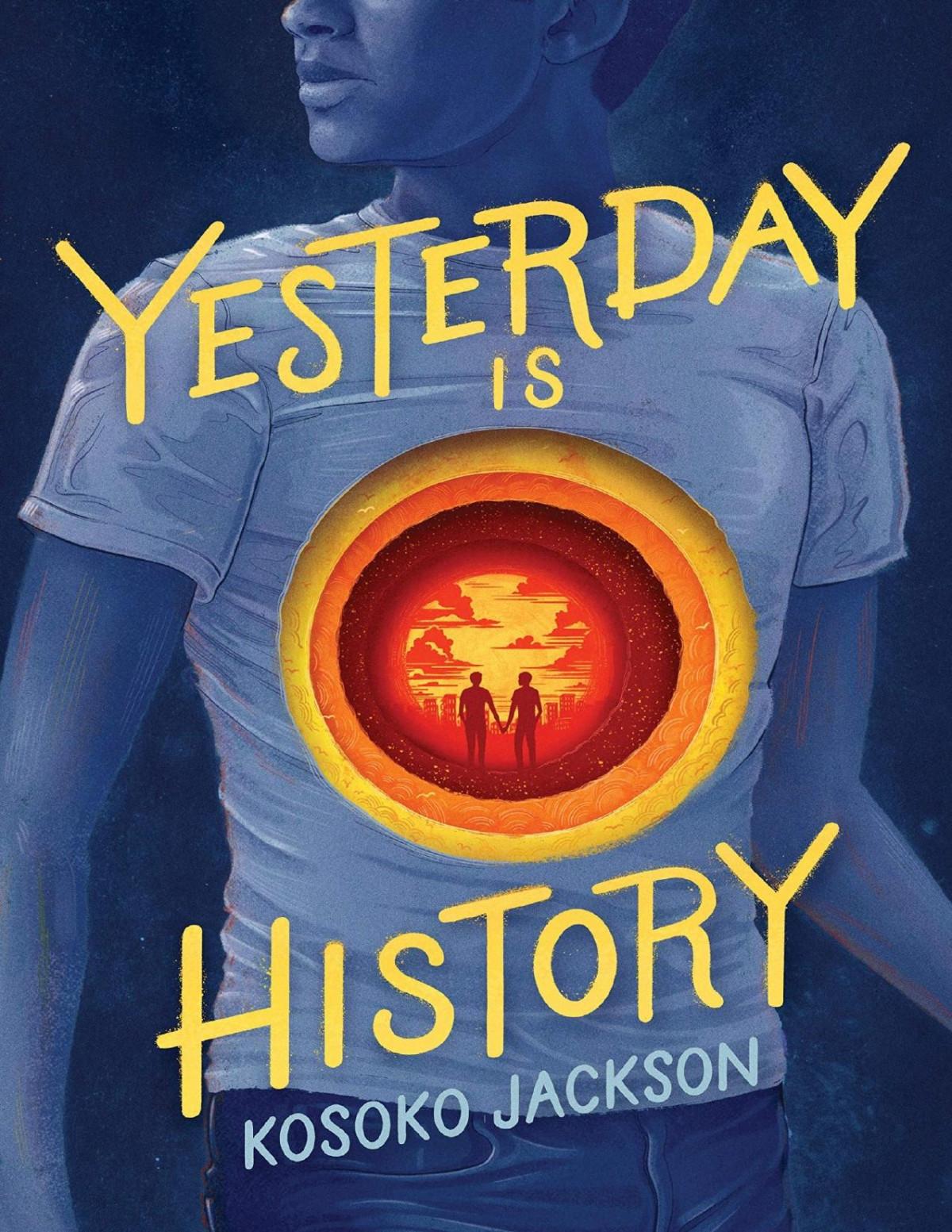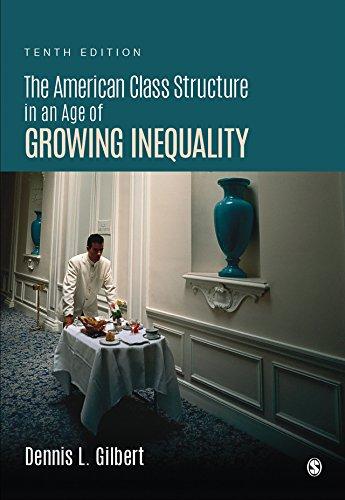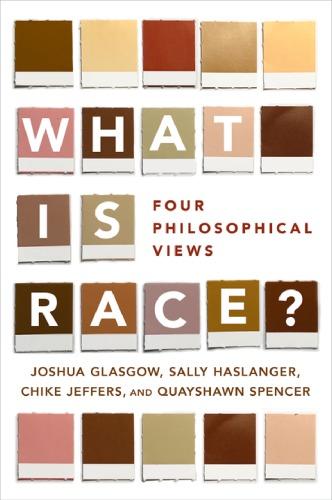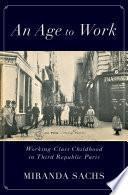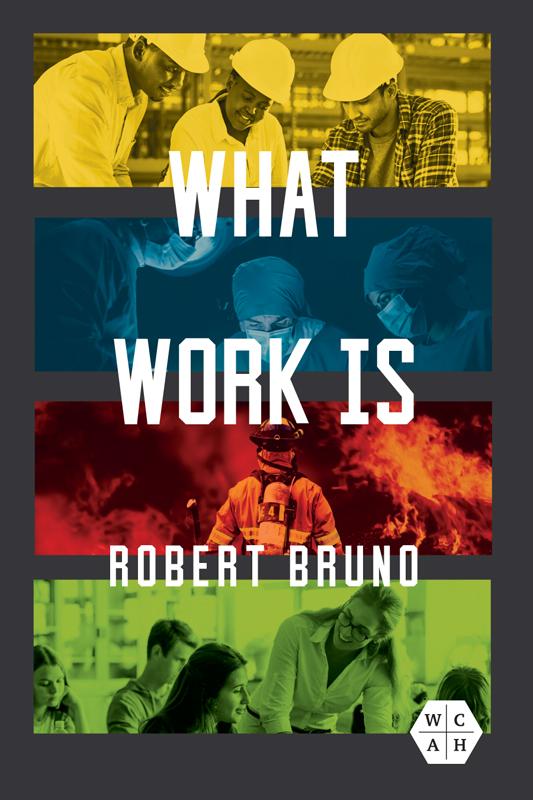What Work Is ROBERT BRUNO
© 2024 by the Board of Trustees of the University of Illinois
All rights reserved
Cataloging data available from the Library of Congress
ISBN 978-0-252-04549-3 (hardcover)
ISBN 978-0-252-08760-8 (paperback)
ISBN 978-0-252-05511-9 (ebook)
Contents
Acknowledgments
Introduction
CHAPTER 1.The Time of Work
CHAPTER 2.Work and Space
CHAPTER 3.Work’s Impact
CHAPTER 4.The Purpose of Work
CHAPTER 5.The Subject of Work
Conclusion
Notes
Index
Acknowledgments
I have been given a gift. For nearly thirty years, workers of all trades, occupations, genders, races, nationalities, and ages have allowed me on occasion to be their instructor. The worker-students have numbered in the thousands and the educational subject matter has touched nearly every aspect of working for a living. Although admittedly it’s an unlimited domain of exploration; just as I end one class and type the last words on the page a unique perspective emerges to me. The moments have been precious opportunities for me to learn not only what work is but why individuals experience it as they do. Each labor studies class raises the fundamental question; does work have to be experienced this way? And what does it do to us as human beings to construct a society and an economy that treats workers as derivative of financial objectives instead of as individuals with moral value who create the world? My students can’t uniformly speak for the experiences of millions of workers, but their experiences are raw, visceral, impactful, and enlightening. And I get the privilege of hearing their stories. I’m incredibly fortunate to be able to build relationships with workers so that we can trust one another enough to talk together about doing work. The indebtedness I feel for all the students who have taken my classes is beyond the language available to express my gratitude. So, until I find a more suitable vernacular, a deeply genuine thank you will have to suffice.
The opportunity to be an academic labor educator requires having a university program, like ours at the University of Illinois’ School of Labor and Employment Relations that values lifting the voices of workers. Too many sister university labor studies programs have been wiped out or
diminished across the country. My fellow labor educators do inspiring work with relatively shoestring budgets. I don’t think it’s coincidental that slashed labor studies programs have occurred while worker job quality has deteriorated over the last forty years. Not sure what is cause and what is effect but I’m confident they go together.
Getting students in my class requires having and building productive relationships with the state’s labor movement. University labor studies programs owe their existence to organized labor’s commitment to higher education and the value of training folks in labor relations. I am fortunate to teach in a state with a large and supportive labor movement. The individual unions who have sent their leaders and membership to our classes are too numerous to list. Trying to mention them by name risks unintentionally offending the one’s left out. However, along with the Illinois AFL-CIO and Chicago Federation of Labor, over my career several unions have been regular anchors for our work and deserve to be noted: United Steelworkers District 7, International Union of Operating Engineers, Local 150, American Federation of State County and Municipal Employees, Council 31, International Brotherhood of Electrical Workers, Local 134 and IBEW 6th District, Chicago Laborers District Council, Service Employees International Union, Local 1, Mid-America Carpenters Regional Council, Illinois Federation of Teachers, Illinois Education Association, Illinois Postal Workers Union, and the Associated Firefighters of Illinois.
Books, like any other product of labor, don’t just happen. Special thanks to University of Illinois Press Acquisition Editor Alison Syring Bassford. She was always encouraging, insightful, and enthusiastic about my project. I’m grateful she took my call when I came to her with a manuscript about “what work is.” Every author should be as lucky as me to have such an editor to guide their ideas into print. Communicating the right ideas and using the correct grammatical sense was possible because of the patient, careful work of the UIP’s Manuscript Editor Ellen A. Hurst. I’d rather do pretty much anything else than construct a book index, which is why I really appreciate people like Sheila Hill who did one for me. And several rounds of reading and correcting proofs were not a burden due to the press’ Managing Editor Jennifer Argo’s talents and good humor. In truth, there wouldn’t be a book without the time the expert reviewers committed to conducting a rigorous and thoughtful reading of my manuscript. I’m grateful for their enthusiastic response and intellectually
challenging comments. Additionally, a book shouldn’t be judged by its cover but without one it would just be ink on a lot of white paper. It’s not easy capturing in images “what work is” but Art Director Dustin Hubbart and his team nicely represented the book’s themes in vibrant colors and expressive photos.
Despite the editorial work of the university press, nothing I write escapes the watchful trained eye of my wife Lynn. She has a Doctorate in Educational Leadership and taught reading and writing at the middle school level for years. Sometimes having an English teacher as a partner can be a blessing and a curse. Like when my ideas weren’t so coherent, or commas were being overused and verb-noun alignment was spotty. But Lynn patiently read every page of my manuscript just as she did thousands of her students’ papers. Her love, skills, and red pen are invaluable to me.
Lynn good naturedly constantly reminds me that I’m so incurably curious and protective about the working class because I’d rather not do the work millions of people faithfully do every day. Yes, and therefore I can’t teach classes and write books without the workers who build the roads, manufacture the cars, wire homes and offices, drive busses and trains, construct buildings, take care of children, nurse the sick, teach everything, clean offices, deliver packages, keep track of records, brew the morning coffee, grow the food I eat, and pick up my garbage. My dependence on a massive chain of interdependent workers to simply breathe, let alone write a book, is mind blowing. Nobody flourishes without other workers. I’m thankful for all those I have taught and for those I will never know. This book is dedicated to their labors.
One last thing. I hope my daughter Sarah will read What Work Is. Work and what we make of it is always uncertain and contested. Except that most will have to live off their labor income to live decently, the future of work has never been harder to predict. Everyone, however, deserves to do work that will bring them happiness. I don’t mean just a nice feeling that comes and goes with circumstances. I mean a life-long sense of personal affirmation. More like something they can be proud of doing. The Greek statesman, Solon, offered the dictum, “Call no man happy until he is dead.” The point was to judge whether a person’s life was well lived not on single incidences but on a life-long narrative. My daughter has a lot of work ahead of her. Perhaps the experiences of the voices on the following pages will show Sarah how meaningful her talents really are.
Introduction
WORK IS NOT GOING AWAY. More importantly, the people who will do it are like the people currently doing it and who have always done it—yet what work looks like in the future is anybody’s guess. There are as many ideas about work as there are minds to speculate on it. Pandemic-forced changes and artificial intelligence have only accelerated and jumbled the possible transformations of skills, locations, jobs, and organizations of work. The seeds of social, technological, economic, environmental, and cultural development shaping how people will work tomorrow were already planted in the past. If you need to work for a living or depend on somebody who must work for a living, the most recent past is not a very comforting predictor of the future.
Over the past half century, bad jobs have proliferated, and once-good ones have been downgraded by government policies and employer practices. The 2020–2021 recession punished millions of hourly workingclass workers. A post-recession boom produced a hot job market that put millions back to work, but a record number of millions also either chose to stay home, found a different boss to sign paychecks, or sought a free-form way to earn a living. Nothing about work seemed predictable, and questions proliferated. What is the future of work in America? Predicting what happens to productive work is a high-stakes parlor game about the most important of human activities. There’s much that makes us human, but work —fully understood—is critical to our individual and social development. Society itself emanates from how we make, distribute, and use the products of our collective labor. Karl Marx stated it as an immutable law that “labor … is the condition of human existence which is independent of all
forms of society.” It is an “eternal and natural necessity which mediates … life itself.”1
While the forms work takes—and importantly, how work is valorized in the future—are up for grabs, there are near certainties we can count on. Work will have an enormous contradictory impact on the workers and society they build. Anthropologist Herbert Applebaum draws on a biological metaphor to centralize the importance of work to the individual and society. Work, he notes, “is like the spine which structures the way people live, how they make contact with material and social reality, and how they achieve status and self-esteem.”2 Fortunately, we don’t have to wait or guess about work’s transformation in the future. I contend that, in order to develop policies and practices about work for the future, we should ask the workers right now what work is so that they can be the architects of their own destiny. As the United States struggles with an unchartered and unprecedented change in how people will work and think about work, this book recommends a “future of work” that listens to what workers say “work is.”
At some point in their lives, most people in America will be employees. They largely self-identify as working or middle class. Many are working poor. Usually a few million always want to be someone’s employee but can’t find a job. Part of our secular religion is that work is character building and with enough sweat equity, anyone can convert honest labor into personal prosperity and fulfillment. We pay cultural homage to working class ethics, work-family ethnic esthetics, “blue collar” values, and hard-working “lunch pail” self-sacrificing men and women. From Aesop fables to annual reviews of retirement accounts, we are raised to prioritize the need to place work above leisure, contemplation, relationship building and prayer. Work is both how we earn a living and how we find dignity in our lives. Our labor contributes to the development of our moral character and enables us to live a life of purpose. Through our work we establish agency in the world. Because we work, we have a legitimate place in the social order and are entitled to the fruits of our labor. I work; therefore, I and we exist. A cornerstone of the American dream mythology is predicated on the faith-based belief that paid work pays off. It is so core to our belief system that we never ask, What is so good about work anyway? Now would be a good time to start asking. Despite our unexamined obsession with work, rapturous views of laboring for a living have not been
universally held. Bertrand Russell sardonically expressed the opinion “that immense harm is caused by the belief that work is virtuous.”3 The question of work’s goodness however isn’t posed because the answer is typically treated as a given.
When I say I’m interested in understanding what work is, the “is” lies beyond the conventional concepts used to describe work. My assessment includes the physical, intellectual, and emotional mechanics of labor and all the attendant dynamics, but it goes deeper. I’m looking for the ways that a person’s work manifests itself in the world and is then realized by the worker. The “is” I’m exploring in the pages that follow is how the worker perceives and understands his or her labor. Here work is not an object of thought but what the individual lives through.4 In this sense I’m trying to uncover the phenomenology of work. My intention is to see work from the worker’s point of view and explore why it matters.
To examine this question further, let me first define the kind of work I’m looking at.5 The work I’m talking about involves the making, buying, or selling of goods or services, and most importantly it is paid labor. Household and family labor, volunteering, and community organizing are all essential life activities, and there is a growing opinion among economists and sociologists, which I agree with, that these nonmarket forms of work have real financial value and should be seen as contributing to the country’s economy.6 However, the questions raised in this book are about paid labor with workers employed in various occupations.
Worker-Students
In forming a perspective on this type of labor, I’ve sought out the opinions of the worker-students I’ve taught in labor education classes at the University of Illinois over the past quarter century. Two of the most popular classes I teach are labor history and labor studies. I’ve taught the subjects chronologically and thematically, and usually over multiple sessions. Students have taken classes on the university campus, at union halls, and in union apprenticeship schools. I have taught them in the morning, afternoon, at night, on weekdays, and on weekends. My classes have occurred all over the state of Illinois, across the Midwest, in Pennsylvania and as far as way as California, New York, Nevada, Louisiana, and Oklahoma. Across these places and times, my students have all been working adults enrolled in a
nonmatriculating (i.e., they are not pursuing a college degree) noncredit class. While I have been teaching, there are in any given year approximately 20–24 percent female and 30–33 percent Black and Hispanic students. Their ages range from early twenties to late fifties. Student race and gender composition reflect national demographic labor force breakdowns. Women students, for example, account for a very small percentage of workers in the construction trades, while making up a very high majority of nurses, teachers, and employees in care and service occupations.7 There is racial and gender diversity among students working in manufacturing, transportation, the postal service, and government agencies. Veterans are well represented in the building trades. The majority of my students own homes and are raising children. They are Democrats, Republicans, Christians, and non-Christians, and most are non-college educated. The majority are rank-and-file members of a labor union. Most hold no senior elected or appointed union office.
Even more important than who they are demographically, though, is what my students represent. My students are part of the forgotten and abandoned working class—left behind in the last four decades as inequality raged and those at the top of the income distribution captured most of the gains. Yet because they are largely union members, they are not the most downtrodden or impoverished workers. Not yet anyway. Threatened by decades of political efforts to weaken or destroy labor unions, they have a tenuous hold on economic security. The workers I teach are the product of organized labor’s monumental efforts and substantial achievements. They are neither the most marginalized nor the most elite Americans, but they have a great deal to say about work, and we would be wise to learn from their experiences.
“Work is” Assignment
As part of the classes, I ask my students to do an exercise where they complete the following sentence, using no more than six words: “Work is ______?” That’s it. The words used don’t even have to add up to a grammatically correct sentence. My favorite ungrammatical essay was “Work is sucks.” But “work sucks” (which I have gotten a few times) or “work is sucky” (never heard this one) both communicate what the worker intends. Once the students have given their answers, we then discuss them
as a class. I’ve gotten thousands of responses. Groups as large as two hundred workers and as small as a handful have taken the classes.
The discussions typically go on for one to two hours. Where possible I write out many of the responses on a white board. They add up to a beautiful and evocative collage of nouns, verbs, adjectives, adverbs, and intimate statements. Loss, pain, exhaustion, joy, strength, purpose, confusion, creation, destruction, happiness, anger, the first-person I, family, uncertainty, choice, money, integrity, life, death, time, and space are a small sample of what fills the board and our collective heads. Work is a lot— maybe too much. Or not enough. It could perhaps be everything. Sorting it all out comes next.
I use this writing and discussion exercise because workers are rarely given a chance to talk about work. I don’t mean talk about their job but talk about work as a lived experience, as a heuristic. Subsequently, I mean work largely defined in all its dimensions by popular media, educational institutions, employers, and elected leaders. Schools are particularly problematic. The pedagogy used in secondary education typically ignores work all together. With few exceptions, university and college programs skip past a study of their students’ future and inevitable work relationships. Any meaningful focus on the class-based system we live in is shoehorned into graduate level sociology courses for the relatively few fortunate enough to delay employment. The preponderance of my students, like most people working in hourly wage jobs, don’t have college degrees. Therefore, writing a six-word essay is a small but impactful way for working-class men and women to begin thinking about and articulating what elements are essential to understanding their class relations. It is a step toward enabling workers to define themselves in terms relevant to their essential life activity. To know themselves as central to civil society and not as costs of production; objects of recruitment, observation, evaluation, and discipline; or according to productivity statistics. The essays are self-reflections designed to strengthen the ability of workers to be intentional and conscious actors in their working-class lives.
To faithfully convey what thousands of carpenters, laborers, electricians, steelworkers, autoworkers, journalists, government employees, operating engineers, teachers, nurses, retail and food workers, service workers, janitors, machinists, plumbers, pipe fitters, truck drivers, cabbies, bus drivers, painters, postal employees, firefighters, and workers from other
occupations have said about work, I have categorized their responses into the following five themes: time, space, impact, purpose, and subject.
External Inspiration
My worker-student six-word essays (eight if you count the prompt “Work is”) are also informed and inspired by two other sources. National Public Radio invited people to write six-word essays on race, called the “Race Card Project.” Race in America is a powerful signifier of identity, and individuals experience it in ways that have profound effects on their sense of self.8 After reading and listening to many of the essays on race, I realized that work could also be the catalyst for short, thoughtful, and emotional expressions. The subject of work has always inspired people and the catalogue of books, songs, plays, and movies dedicated to a working-class life is extensive.9 Work has even been considered a form of prayer.10 Unlike the way that philosophers, social scientists, economist, and popular commentators have spoken or thought of work, however, I endeavor in these pages to mostly describe how workers experience work.
The other inspiration for my class assignment was taken from an artistic form. The “What Work Is” exercise happens to be the title of an award-winning book of poetry published in 1992, What Work Is by former United States poet laureate Phillip Levine. Levine grew up in Detroit and worked in the city’s auto factories. In working in and later writing about what he called “stupid jobs,” he became “the laureate, if you like, of the industrial heartland.”11 Work is “stupid jobs.” Powerfully said in only four words. Levine was more verbose when he added, “[Work at Cadillac and Chrysler was] so heavy and monotonous that after an hour or two I was sure each night that I would never last the shift.”12 In a tribute written after his death in 2015, the following excerpt describes the revelatory nature of Levine’s poetry:
We expect poets to describe the soul, the stars, the vitals from birth to death. We do not expect them to describe ‘what work is.’ But Philip Levine was America’s pre-eminent poet of the working life. Like Whitman he ‘heard America singing’ but the song was on the graveyard shift, syncopated by the incredible clanging, the noise, the heat, the cold at your back, the fire in your face in the forge.13
After the workers and I were finished discussing their essays, I would read aloud the poem, “What Work Is.” Full disclosure: I like reading and hearing poetry recited out loud. It is a type of performance art that I find very melodic and impactful. And to my pleasure, I discovered that workers liked hearing it also. Especially when I read Levine’s seminal work.
They’re curious as I begin. “We stand in the rain in a long line waiting at Ford Highland Park. For work. You know what work is—if you’re old enough to read this you know what work is, although you may not do it. Forget you.” Quickly their interest rises. “This is about waiting, shifting from one foot to another. Feeling the light rain falling like mist into your hair, blurring your vision until you think you see your own brother ahead of you, maybe ten places.” The mention of a sibling triggers a closer listen.
“You rub your glasses with your fingers, and of course it’s someone else’s brother, narrower across the shoulders than yours but with the same sad slouch, the grin that does not hide the stubbornness, the sad refusal to give in to rain, to the hours of wasted waiting, to the knowledge that somewhere ahead a man is waiting who will say, ‘No, we’re not hiring today,’ for any reason he wants.” Hearing that no shakes up the room a bit.
“You love your brother, now suddenly you can hardly stand the love flooding you for your brother, who’s not beside you or behind or ahead because he’s home trying to sleep off a miserable night shift at Cadillac so he can get up before noon to study his German. Works eight hours a night so he can sing Wagner, the opera you hate most, the worst music ever invented.” Nobody knows Wagner, but lots of folks have brothers and sisters they love.
“How long has it been since you told him you loved him, held his wide shoulders, opened your eyes wide and said those words, and maybe kissed his cheek? You’ve never done something so simple, so obvious, not because you’re too young or too dumb, not because you’re jealous or even mean or incapable of crying in the presence of another man.” Mentioning tears leaves an emotional mark. I can hear a pin drop in the room. All eyes stay fixated on me. When I recite the last line—“No, just because you don’t know what work is”—there’s first silence, and then often applause.14 I’m talking about applause from workers sitting in a classroom either before or after a long day’s work, or more incredibly on a day off, for a poem.
Personal Inspiration
Nearly twenty years ago I spoke at great length and with the same level of emotional seriousness to my parents about working for a living. Our words didn’t rhyme but in the prosaic, ordinary descriptions of their lives I realized how being working class mattered. Dad was a union steelworker for thirty-seven years and mom worked several jobs, including as a beautician and medical records manager in a mental health facility. I also had similar conversations with other steelworkers. I wrote about my discussions in Steelworker Alley: How Class Works in Youngstown, a book about being working class in communities in and near Youngstown, Ohio. Many of these folks are no longer alive. My mother, Lena, died in 2005. My dad, Robert, is a hearty ninety-four (at least as I write these words) and still playing tennis and pickle ball. Work was at the heart of their life stories. If not everything, work was pretty much the most important activity that influenced the people mom and dad had become.
Two decades after the hours I spent in neighbors’ living rooms and kitchens and on their back porches, listening to workers, something I didn’t fully explore at the time has nagged at me. I have been curious about one question I didn’t ask anyone, particularly my dad: What was work to them? I don’t mean the actual act of running a machine or picking up a tool. We spoke plenty of such things. Workers were mostly overjoyed to go into the minutia of their jobs. It took very little for folks to expound on the elements of every job task with precision. My dad was at first uncertain about talking, but once he got going stories streamed forward. I listened attentively to him and others, as would a student in a tutorial or an anthropologist hearing secrets being revealed. We talked about doing work, being paid for work, working with others, fighting with people who didn’t work, living where other workers lived. But did we talk about what work is?
I went back to the boxes of interviews I did with everyone and listened to tape recordings with my father and mother that I never used. Nope. I didn’t ask my parents what they thought work was. I asked a lot of other questions about work and family life of the men and women who once built Youngstown into an industrial powerhouse, but I never gave them a chance to describe what work is. We talked very easily about what they did for a living. Each person could elaborately and often prosaically dissect the
mechanics of their work. They told me what they were paid for their labor and showed me paystubs. Many had artifacts from their jobs, and some made gifts of them to me. Folks colorfully described the workers they toiled next to and the bosses who really pissed them off. The sounds, smells, sights, and working conditions of the mill cascaded from our conversations. They showed me pictures of the people they loved and who motivated them to punch a mill clock.
I recall my father walking out of the back door of the house at night and wondering, Why in the world is he leaving now? And where is he going? I’d lay awake at night in my bed perplexed by the mystery of dad’s backdoor disappearance. Tucked safely under the covers, my confusion was later surpassed by a sense of guilt when I found out what was going on. Mom said dad was just going to work. But why? And why at this hour? Because, my mother patiently explained, it’s what he needed to do so that my brothers and I “would have a roof over our heads.” That roof came with strong walls, a living room featuring a nice picture window, a few small upstairs bedrooms, and a yard big enough for a kid to play imaginary baseball. I knew my life was comfortable but had no clue as to the reason. Mom and dad both worked, and my three brothers and I enjoyed the pleasures of growing up in a safe, loving, tight-knit family. What I didn’t know was what it took to have that childhood.
My parents never talked about the jobs they had. They just worked. Mom held jobs throughout most of my later childhood and teenage years, including in a factory and providing office support at a medical facility. Dad worked revolving eight-hour shifts, and his irregular and daily absences weighed heavily on my younger mind. To be honest, they triggered a contradictory sense of feelings, which was the source of my boyhood guilt. Before, during, and after writing Steelworker Alley, I spoke to my mother many times about her life and work. Most of the time the conversations included expressions of pride, fortitude, sacrifice, struggle, and happiness. Many, however, were laced with regret, loss, pain, and sadness. The sad ones were indelible. Mom admitted to me that she slept alone a lot of the time, though my parents never lived apart. Dad’s rotating shift work had him leaving the house late at night in order to put in an 11:00 p.m. to 7:00 a.m. “good eight.” Mom was guessing at the time her bed was half empty, but she felt the lost intimacy and emptiness caused by nearly four decades of shift work. By comparison, what I felt was of less impact, but on those
occasions that dad ventured into the darkness doing God knows what while I rested secure in a warm bed, I felt guilty for not wanting to be where he was. Better him than me, I reasoned. My loving, protective, large, and extended working-class family bestowed a wonderful childhood on me, but I didn’t understand how it was made possible. Yes, family and friends were essential, but work—the productive human activity that kept us together— provided only the aesthetic and arcana of a working-class life to a kid. Not the bone and sinew to a socially constructed material world. Guilt and growing up eventually inspired a burning curiosity about the God knows what.
Our home also came with a fruit cellar—a place where work and talk of labor was prominent. When he wasn’t on strike or laid off, dad worked in the steel mill. On the days he wasn’t at work, he didn’t do traditional household chores. But he did put up a fence on one side of the driveway, paint the back side of the house, and put a bathroom in the basement. That last project paid off. You see, mom worked both away from and within the home. I don’t mean just unpaid domestic labor, although there was a surplus of cleaning, cooking, doctoring, and educating. What I mean is that she worked in the basement near that fruit cellar getting paid to cut, style, and color women’s hair. I know this well because as a boy I watched—or more exactly, listened. The voices of working women like mom, married to men who worked in manufacturing occupations like dad, filled my childhood memories. Their stories left such a strong impression that I was inspired to write a poem about the conversations. The poem brought me some very modest acclaim by winning honorable mention in a poetry contest. More about that later.
As mom twirled a scissor like a scalpel, her customers talked. And mom happily talked back. They spoke intimately, as if in a private refuge reserved just for women. Stories of kids, husbands, local news, sickness, family celebrations, and work were shared. I heard them talk while I was perched at the top of the stairs leading down into the beauty shop that dad built. He wasn’t much of a craftsman—too willing to compromise on a corner or two—but he constructed the shop on his days off as a millwright. It had a lot of functional charm, and women came and went every day. The downstairs bathroom was crucial to production.
Mom’s work was supercharged with human elements, some too subtle to appreciate. In retrospect this was true of every worker I spoke to in
Steelworker Alley. I asked my mother about her jobs, just like I did workers in the three other books I wrote. That amounts to a lot of words. But I never asked her or any worker, What is work? Maybe it was just too obvious. What would people have said? Dad unintentionally gave me a clue. When we first sat down to chat about his job, he said very forthrightly and a bit dismissively, “Why in the heck does anyone care about my work?” He expressed legitimate surprise that I thought that what he and other steelworkers did to earn a buck would be something that people would want to read about. Dad never read Studs Terkel’s Working or for that matter any book about people like himself and my mom.
Turns out, though, dad was wrong. Very wrong. People did read about him, mom, and thousands of working-class people like them who, through their labor, brought a world into existence and shaped personal identities. Work did all that. Not, of course, without other influences, but the job was a primary mover in the trajectory of the lives of working-class men and women. Over my career I have talked extensively with workers about their work. Yet in one critical sense we never said a word about their work. What did work mean? How was it experienced?
Reflecting on it now, my conversations were rich with evocative insights about what work was and how workers made meaning out of their work. I just never wrote about it. I was interested in class identity, and while doing work was essential to seeing those class relationships, I mostly elided over what was not in my line of sight. I missed the complex interpretations that workers gave to their labor and how work created meaning in their lives. What we didn’t do was investigate work deeply. And it’s tugged at my consciousness for years. This book is about wrestling with the question —What is work?—and offering what I’ve learned are plausible answers.
Student Responses
In chapter 1, work is measured and encapsulated in time. It is always done in the present and can be appreciated or scorned as it is being done. Hour to hour, day to day, shift to shift, assignment to assignment a person’s labor is appropriated. Time and work are used and thereby used up. But the work can also and usually does endure. A person’s labor can be thought of as a mere exchange for an immediate gain, but it is also an investment meant to be best realized at a later date—a down payment on the future. Workers’
notions of time were conveyed in nearly every statement they made. In the context of work, ideas about the past, present, and future coexisted. Labor transcended time.
Work also always happens somewhere and is reflective everywhere. Chapter 2 examines the space that workers occupy, work on, bring into being, and transform. Workspaces are ubiquitous. We work everywhere. Not only does our labor appear in every nook and cranny of our lives but it also transforms the physical spaces we live in. No space is unworked. Every place is built up or at least touched by labor. The properties of earth, wind, water, and fire mixed with human labor produce the world that houses us. If all space is the product of work, then workers are creators. And yet who would know that? The names of workers don’t appear on the buildings, clothing, schools, hospitals, computers, or automobiles that they construct or operate for owners, investors, and taxpayers. Every space bares their mark but leaves off their names.
Even without recognition, however, the impact of labor, or what it does to a person and society, is profound; this is the subject of chapter 3. Work hurts. Work disables and abuses. It exhausts, stresses, and ultimately kills. Work dictates life spans. It also invigorates, inspires, satisfies, and brings joy. Workers told me repeatedly how their labor gives birth, heals the sick, clothes the naked, feeds the poor, comforts the conflicted, and saves lives. Working for a living was a given. It was associated with not being able to live off profits, rents, dividends, or interest from borrowed money. But the physical, mental, and emotional effect of workers’ labor on themselves and others was a conditional state of existence that workers had to constantly navigate.
While the impact is uncertain, workers do their jobs for a reason. Chapter 4 explores the reality that there always was a purpose for what they did. In fact, in nearly all cases there was more than one. People labored to afford medicine and pay a mortgage but also to feel good about themselves. Work had extrinsic rewards and intrinsic benefits. Workers did their jobs faithfully and seemingly without need for daily justification, but never without intent. Something motivated them to get out of bed in the morning or catch the late afternoon bus to arrive at work. Much of their labor felt compelled. If work was difficult, poorly paid, and disrespected—you know, a “shitty job”—then work was sacrifice. Or as one worker put it, “work ain’t nothing but a job.” But workers wanted more from their honest labors.
If they painted a wall, they wanted to be respected as painters. When they dug a ditch, they expected to feel good about the use of a shovel. Workers knew that picking refuse up from the corner was as important to public health as administering a test to detect a deadly virus. They worked for bread and, yes, for roses too.
Finally, as presented in chapter 5, in the “What Work Is” responses, it was apparent that work always had a subject. Labor was always done for someone. Work—skilled, unskilled, or semi-skilled—was done for notions of the self as well as for people that were loved. And pounding a nail, delivering the mail, and administering a vaccine were all usually done for complete strangers. Who benefits when you work? No doubt the employer and the customer or end user. Certainly you benefit in a myriad of substantial and minimal ways. How about your son, spouse, partner, neighbor, or just the person driving down the highway? For whom does a firefighter climb a ladder? Work happens for selfish and altruistic reasons. But it always gets done because of and for people.
Why these concepts? Other ideas did reoccur, and there could be different ways to organize what these workers said. However, time, space, impact, purpose, and subject were the concepts that most animated discussion. They were resonant in every class, with every combination of workers, and in every setting. But reoccurrence alone is not the only reason for focusing on each idea. These ideas are also universal concepts that deepen our subjective understanding and appreciation for work’s influence on our society and thus bare greater introspection.
Time is fleeting. Noting that things, like work, happen in time means in part that they happen according to a certain sequence. The cycle of life, from birth to old age and ultimately death, allows for only a window to do what we will. Nothing is permanent. And to do work in time means that work can be a measurement of time. One’s life, therefore, goes by in units of time on the job. In the end, what we do with our lives depends on how we use our time. And a great deal of it, while awake, is consumed by working.
Space sets the limits of our lived experience. Our work has a spatial dimension and can be understood in relation to the work of others. We each act in and on the places we occupy. Whether in a coal mine, restaurant, school, or hospital, the space we work in is transformed by our labor. The space only exists because we or others before us first imagined it and then
mixed blood and sweat with natural resources to bring the space into existence. Even when we’re not working, the places we move through take form only because they are worked up. Simply put, work creates space. Without our collective labors, we would literally be nowhere.
The impact of our work is inevitable and ubiquitous. Good, bad, or indifferent, what we do leaves an impression everywhere. Through our work we imprint our lives on the landscape, and people imprint on us, others, and the world around us. The landscape is altered because of what we do to it. So is our body. The work we do triggers physical and emotional changes. It is simultaneously a creative and destructive act. Therefore, since no act of labor is without consequence, the impact of our work should be explored.
Purpose is why we act, why we choose, why we love, and why we work. A life without purpose holds no attraction. The hours of our labor are extensive and jam-packed with meanings, both unexceptional and awesome. We work for extrinsic and intrinsic reasons. Asking, What do you do? is equivalent to inquiring, What good do you do? and What are you good for? When we are really involved in our work, we feel an intimate connection to our labor. We become selfless. Obituaries mention loved ones left behind and occupations procured. Love and labor went together in life; they remain coupled in death.
The subject of our work reveals the individual agency and interdependency of our lives. Work is inspired by a desire for personal and social well-being. When we work, we form the self. The labor we do becomes a powerful contributor to our identity. But we are also the sum total of the labors of others. In the collective work we perform, our sense of self coexists with selflessness. Work is done for “me,” but no worker failed to recognize the “we” behind a life of honest labor. We may work in isolation, but no one’s labor is intended just for the person doing it. Every act that’s a part of gainful employment will be for someone. Human beings may be innately social, but human community comes from hard work. Work in any fashion contributes to how we expand, discover, and produce knowledge about ourselves. Through our work we become a subject formed out of contingent historical possibility.
Let me note here that my insights are not drawn from worker surveys or interviews. What workers believe “work is” comes obviously from their perspective. Surveys and interviews are very useful information-gathering
and analytical tools. There is however always a methodological concern about accuracy and bias when asking someone to self-report an answer to a question. The essay-writing prompt doesn’t involve answering questions, but it may produce unreflective and illegitimate responses. Thankfully, I got very few of those.15 Additionally, perhaps six words is insufficient to describe a person’s experience with work. But in the same way that thinking about the relevance of race in our personal life stories invokes a powerful impression on consciousness, I believe work has the power to draw out an essential, unfiltered truth about our individual existence.
Along with sharing what workers have taught me about what work is, I will draw on occasion from other diverse academic and philosophical sources, including music and poetry—some of it my own—to help present workers’ points of view and my understanding thereof. I also draw from my own experiences growing up in a working-class household to emphasize what the class exercise has revealed. Where helpful I will reference the insights of other theorists and writers. Selected works from Karl Marx, and particularly his analysis of capital and labor in Capital and the 1844 Philosophical Manuscripts, proved to be particularly useful to presenting the five themes curated from my students’ expressions. Adam Smith’s An Inquiry Into the Nature and Causes of the Wealth of Nations will likewise make an appearance or two. Regarding work both men are invaluable sources and, surprisingly, have much in common. But this book is not meant as a comprehensive review of what has been written about work from an economical, sociological, psychological, philosophical, industrial relations, and ecclesiastical perspective. For readers interested in such books, I strongly suggest Professor John Budd’s very well written and comprehensive The Thought of Work. Nor am I situating my perspective within or against any tradition or theoretical field of study. What has been written about the labors that people do stands as a testament to the subject’s enduring quality. This is also not a statistical analysis of the words or concepts workers used to describe the reality of work. I will however cite numerous anonymous excerpts from my students’ essays and comments. When I do, they will appear in quotation marks without attribution, as in the following excerpt that evoked an endless amount of speculation as to the writer’s intention: “Work is what work was to never be.” Additionally, while theories and philosophies of time, space, and identity are very informative, they aren’t the focus here. My purpose is to share my
understanding of how that most fundamental human activity—work—is actually realized. To provide some awareness about the applied and felt nature of our labor.
Defining Worker-Students (and Who They Are Not)
Let me, however, be clear about the folks I’m writing about. Like Philip Levine I’m writing about workers who depend on a form of labor to survive that is vulnerable to exploitation by those who own the products of that labor. It is as workers that my students create the wealth that the owners of capital come to possess, accumulate, and distribute. While the workers in my class fight for what they believe is a fair share of the wealth they produce, the relatively few people who own what gets made and sold in this country reap enormous financial returns. The disparities are neither justified by any fairness doctrine nor by natural differences in human assets. Marx wryly noted that “nature does not produce on the one hand owners of money or commodities, and on the other hand men possessing nothing but their own labour-power.”16 My students are, in other words, part of a working class that lives exclusively by its labor and not on the profit of any kind of capital. The workers could be considered as “productive workers,” who are directly involved in producing goods or services. These pages are informed by the voices of largely hourly, waged workers that have sat in my classroom over the years. They made up part of the roughly 74 million people or 55 percent of all wage and salary employees paid an hourly rate.17 Students largely worked in occupations within the retail, manufacturing, construction, health and education, transportation, and service industries. With rare exception, they were all union members. However, they also included workers not legally classified as employees, like taxi drivers and rideshare and delivery drivers.
Some workers, like K-12 teachers and nurses, were paid a salary. But if their total work hours were properly compensated, they weren’t doing much better, on average, than minimum-wage employees. And each of these occupations, including those that required a college degree, historically have relied on unionization to raise the quality of the jobs. There is also an exceedingly small number of professional athletes, musicians, dancers, television and radio artists, and actors who make a living from their talents. Some of them have been in my class with laborers and health technicians.
Of course, even athletes and performing artists, along with stage and studio hands, need and have a union because unless someone who owned a team, theater, studio, or concert hall hired them, they couldn’t make a living hitting a baseball, dramatizing a character on stage or screen, or playing guitar. The same goes for institutions of higher learning. A few college professors, like me and many more without good paying and secure tenure positions (i.e., adjunct instructors) took my class, and they too either had a union or were trying to organize one.
My students are not largely drawn from app-platform, day-labor, minimum-wage, or nonunion employment. Few, to my knowledge, held multiple jobs at the same time. Few are noncitizens. I suspect, however, that if they had included the most vulnerable and oppressed workers, the idea of work would still hold out the promise of personal liberation, but work itself would be described (and experienced) more brutally. Nor did essay writers for the most part include workers who were middle management, administrators, administrative specialists, consultants, telemarketers, or corporate lawyers. Few considered themselves clerical. They were not, in other words, the kinds of workers that anthropology professor David Graeber of the London School of Economics described in Bullshit Jobs: A Theory. 18 Graeber argued that there are millions of people in “futile occupations that are professionally unsatisfying and spiritually empty.”19 With few exceptions, the workers in my class felt their jobs offered something genuinely useful to society. Work on any given day—depending on the situation—could be “shitty,” but they benefited from a union and were far from the most vulnerable and exploited workers in our society. Collectively they weren’t a “labor aristocracy” but did have enough political standing in their jobs to feel some ownership and investment in what they did for a living. Their relative job stability no doubt influenced how they responded in class.
These workers are the centerpiece of our capitalist economy. Duke University professor of women’s studies Kathi Weeks nicely summarizes why waged employees should be at the center of conceptualizing work: “It is of course the way most people acquire access to the necessities of food, clothing, and shelter. It is not only the primary mechanism by which income is distributed, but also the basic means by which status is allocated and by which most people gain access to healthcare and retirement. After the
family, waged work is often the most important, if not sole, source of sociality for millions.”20
It likely doesn’t need pointing out, but bankers, Wall Street traders, CEOs, private equity managers, technology moguls, sports franchise owners, and media executives did not take my class. One student’s essay strongly insinuated who was a worker: “Work is for the working class.” Importantly, the compulsion to work was not optional. “Work is mandatory when you’re not wealthy.” Nonetheless, I recognize that the economic elite and owners of massive amounts of capital do work. From their perspectives, they no doubt have valuable answers to “what work is.” It’s just that they don’t depend on their own labors to survive. In fact, if they thought doing the work that made them wealthy was such an unconditional good, the rich would have a monopoly over productive labor, instead of over capital. The 1920s columnist and storyteller Don Marquis offered an appropriate skeptical quip to the claims of earned fortunes: “When a man tells you he got rich through hard work, ask him: ‘Whose?’”21 Take for example, Tony Xu, the CEO of DoorDash who was paid $414 million in 2020. The pandemic was terrific for his financial standing. I didn’t have Mr. Xu in my class, but I did have some of his, as well as other, misclassified rideshare and delivery drivers. Perhaps some of Mr. Xu’s takings grew out of the clever ways that the firm generated profits. In 2020 DoorDash agreed to pay $2.5 million to resolve a lawsuit that found them diverting customer tips intended for workers into company earnings to fund their operations.22 A more essential and structural device to keep worker pay low and CEO pay extremely high is to insist that the drivers are not really employees at all but instead independent contractors. As a result, they are not even guaranteed a minimum wage. Perhaps that is why Maria Figueroa, director of labor and policy research for the Cornell University Worker Institute, referred to the food couriers as “the most vulnerable workers in digital labor.”23 CEOs would likely have interesting things to share about how their work shapes their identity and influences their satisfaction with life. Research shows that once you’ve made enough money, additional increments of earnings don’t add up to more happiness. However, the outsized questionable rewards bestowed on the occupants of C-suites— often weakly correlated to high performing companies—places them in the stratosphere of the capitalist class. A survey done by Equilar for the New
York Times revealed that in 2020 the average CEO received 274 times the pay of the median employee at their companies. CEO pay in 2020 jumped 14.1 percent compared to the previous year. Worker median pay scratched out a measly 1.9 percent increase. In the first six months of 2022, labor shortages, supply-chain bottlenecks, and worker resistance pushed average wages up by 5 percent. Those were the biggest gains in years, and as inflation reached 8.5 percent the nation’s bankers and employers blamed workers’ earnings. Something they also did after prices spiked following World War I, World War II, and in the late 1970s. What they failed to note this time was that the average S&P 500 CEO pay had climbed by 17 percent.24 That brought the median CEO compensation to $14.5 million. Earnings are different things depending on whether they’re from labor income or asset appreciation.
The wealthiest in our society own or manage assets, like real estate, corporations, machines, and invested money that return financial shares well beyond the contributions of their own individual labor.25 The greatest part of their wealth isn’t even in earnings; it’s in capital gains, and consequently they pay a lower tax rate than the childcare provider in my class.26 Tom Wayman has found a wicked metaphor for this classdomination scheme in the children’s game and poem “Paper, Scissors, Stone.”
An executive’s salary for working with paper beats the wage in a metal shop operating shears which beats what a gardener earns arranging stone.
But the pay for a surgeon’s use of scissors Is larger than that of a heavy equipment driver removing stone which in turn beats a secretary’s cheque for handling paper.27
CEOs do something for all that wealth, but it is not the kind of work the janitor, secretary, window washer, or waiter does. Instead, it’s the kind of work that comes from controlling the right to exploit and profit from natural resources and the labors of others.28
My intention is to give workers, not employers, the opportunity to say “what work is” according to their experiences. That is to say, I aim to privilege a worker’s meaning of work above the views of corporate owners, bosses, media heads, and politicians who use their power not only to exploit workers but to define them. More to the point, I want to shift what we think
we know about work away from the self-serving narratives of those who most benefit from others’ labor. My objective is to take seriously the most radical proclamation ever made about class relations in the American context. Sure, Marx’s insightful and elaborate analysis of the interior workings of capitalism remains unparalleled. But when it comes to one powerful summative statement about the relationship between labor and capital, it was Abraham Lincoln who offered the most revolutionary understanding of whose vantage point should be privileged:
Labor is prior to, and independent of, capital. Capital is only the fruit of labor and could never have existed if labor had not first existed. Labor is the superior of capital and deserves much the higher consideration.29
It was uncommon for my students to know of Lincoln’s labor advocacy. I often shared the above quote after the six-word essays were written. But occasionally, without priming, a worker would offer that “work is something that precedes capital.” Listening to the voices of workers will make clear that if left to its own devices capital doesn’t just exploit a person’s labor; it defines that labor in its own image. Our capital-centered understanding of work then gets embedded in laws, employment practices, education, popular representations, and cultural norms. Instead of abiding by Lincoln’s assertion that we give “higher consideration” to the workers— the creators of wealth and the material and social communities we live in— our political-economic system defaults to the interests of capital to set the rules for employment.
Job Quality in American History
Protections for workers, creating high-quality employment and making investments in securing meaningful work, is always reactive. The history of American constitutional change and employment policy is a series of responses to worker abuse. From the Thirteenth Amendment’s end of human bondage for profit-making through the Progressive Era’s late nineteenth-and early twentieth-century workplace reforms, it has always been the owners of labor power that have established the rules for work. Only after muckraking exposés of the pernicious conditions caused by laboring in the “dark satanic mills” and disasters, like the 1911 Triangle Shirtwaist Fire did the political system see fit to institute reforms.30 The
